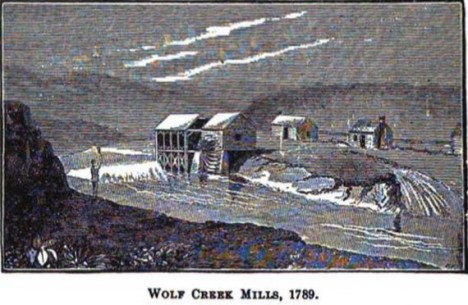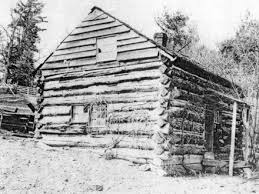Sufferers’ Land
Henry Buckingham
by Dave Barton
In the spring of 1822, the Buckingham family arrived in Norwalk and built a house on a lot where the Roman Catholic Church now stands. One of the children of this family was Fanny Buckingham, who had just turned thirteen, near enough to the age of eight-year-old Lucy Preston to be her friend.
Fanny’s parents, Henry and Harriet, were of old New England stock — their ancestry going back to the early days of the colonies, even to the beginning at Plymouth.
Harriet Talcott Buckingham, Fanny’s mother, traced her ancestry to the beginning of the New England colonies. Her father was George Talcott, whose family came to New England in 1632, and settled in Hartford, Connecticut. Harriet’s mother was Vienna Bradford, a descendant of William Bradford, who came to Plymouth, Massachusetts on the Mayflower in 1620 and was the colony’s second governor.
Henry Buckingham’s family settled in New England in 1637, when Thomas Buckingham arrived in Boston with his wife Hannah. He later moved to Milford, Massachusetts. His son, also named Thomas, moved to Saybrook, Massachusetts, where the family lived for many generations.
Henry’s father, another Thomas, was born in Columbia, Massachusetts. He later moved to Lebanon, Connecticut, his mother’s hometown. He was a soldier in the Revolutionary War, and a leading member of the community. He married Triphena Hibbard and together they had ten children, with Henry being the eldest. Thomas Buckingham, was a strict disciplinarian, whose puritanical training made for an unhappy childhood for Henry and his nine siblings.
Born in Coventry, Connecticut on January 13, 1779, Henry did not have the opportunity for a good education as a child. At eighteen, he moved to New London, Connecticut and worked as a salesman for the mercantile house of George W. Jones, a leading businessman of the town. George Jones had a good library, which he allowed Henry to use. Henry took advantage of this opportunity to read and study history and general literature.
At the age of twenty-four, Henry married Harriet Talcott. Two years later, they left New London and moved to Wilkes Barre, Pennsylvania, where Henry became a successful businessman, owning a large store and several mills. Henry was a tough businessman in those days, and did not always treat his business acquaintances well. Later in life, he remarked that at that time he was a “man of the world,” suing and being sued. By the War of 1812, he was probably the most successful businessman in the Susquehanna River Valley. Then the war came and ruined his prosperity. He was a patriotic man, and helped raise and outfit companies of soldiers at his own expense. One of these companies participated in the Battle of Put-in-Bay. Because of a drop in commerce after the war, he lost his businesses and almost all his wealth.
In 1820, he packed up what remained of his possessions and took his family to Ohio, settling in Putman, near the home of a distant relative. Henry was not happy in Putman. In 1822, he moved again, this time to Norwalk.
Henry Buckingham was forty-three years old when he arrived in Norwalk. He was of medium height, well built, with mild blue eyes and a pleasant expression. People liked him — the way he was always courteous and affable. Shortly after he arrived, the position of Huron County Treasurer came open and he received an appointment to the job. He did so well that the citizens of the county reelected him three times.
Henry’s fortunes had taken a turn for the better. But he wanted more. He saved his money and prepared to go into business, intent on rebuilding his lost fortune. By this time, he had changed his outlook on life and the way he approached his dealings and relations with others. The collapse of his fortunes after the War of 1812 had humbled him and made him more understanding of the needs of others. He also found religion, something that was lacking in his life previously.
This conversion appears to have taken place sometime after the war, but before he moved to Ohio. Not being religious, he was in the habit of taking his son George fishing on Sundays. One day, he was fishing under a bridge when an elderly Catholic woman passed by on her way to Mass with a missal in hand. The woman saw him fishing and said, “Mr. Buckingham, you ought to know better than to break the Holy Sabbath; see what you are teaching your little boy.” The woman’s scolding embarrassed Henry. He hauled in his line so hastily that he broke the pole. He took young George home, and from then on never went fishing, or did anything else on Sunday.
By the time he moved to Norwalk, Henry was a devout Presbyterian. He joined a church in Milan, and was active in the American Bible Society. For three years, starting in 1826, he was depository of the Huron County branch of that society. Religion shaped how he saw his role in the world. He opposed war and promoted universal brotherhood and the rights of man. Later he would put these beliefs in practice in the anti-slavery and temperance movements. [1]
As an officer of the court and man of business, Henry soon became acquainted with Platt Benedict, and engaged in various enterprises with him. Like Platt, he was active in the Royal Arch Chapter of Masons in Norwalk. The two men often met in each other’s homes. A few years later, a marriage of their children made the two men’s relationship even closer.
Footnotes:
[1] The story of Henry Buckingham and the Buckingham family is from the “Obituary of Henry Buckingham,” by Levina Lindsley Buckingham, The Firelands Pioneer, New Series, Volume V, The Firelands Historical Society, July 1888, pp. 159-161; “Henry Buckingham,” by Henry Buckingham (his grandson), The Firelands Pioneer, New Series, Volume V, The Firelands Historical Society, July 1888, pp. 120-125; and Family History: Wickham, Benedict, Preston & Deaver, by Agnes & Harriott Wickham, (unpublished), edited by Dave Barton, 2006, pp. 15-18.
#
This post was first published on this blog in 2009.
#
Previous Post: Death, Education, Responsibility
Next Post: Jonas Benedict
#
Thanks for visiting! Share and like this post below, and on Facebook. Let me know what you think in the comments. I’d love to hear from you!
Filed under: Benedict, Bradford, Buckingham, Connecticut, Massachusetts, New England, Norwalk, Ohio, Ohio, Pennsylvania, Talcott, Uncategorized | Tagged: Battle of Put in Bay, Benedict Genealogy, Bradford Genealogy, Connecticut History, Firelands History, Massachusetts, New England History, Norwalk Ohio History, Ohio History, Pennsylvania History, Sufferers' Land History, Talcott Genealogy, War of 1812, William Bradford | 4 Comments »





 Heavy traffic choked the road in both directions. Immigrants crowded westward, many of them destitute from the disastrous summer of 1816. Some persons went in covered wagons — frequently a family consisting of father, mother and eight or nine small children, with perhaps one a babe at the breast — some on foot and some crowded together under the cover with kettles, gridirons, feather beds, crockery and the family Bible, Watts’ Psalms and Hymn Book and Webster’s spelling book. Others started in ox carts and trudged on foot at the rate of ten miles a day. Many of them were in a state of poverty and begged their way as they went. Some of them died before they reached their destination. Broken wagons and discarded belongings littered the sides of the road. [3]
Heavy traffic choked the road in both directions. Immigrants crowded westward, many of them destitute from the disastrous summer of 1816. Some persons went in covered wagons — frequently a family consisting of father, mother and eight or nine small children, with perhaps one a babe at the breast — some on foot and some crowded together under the cover with kettles, gridirons, feather beds, crockery and the family Bible, Watts’ Psalms and Hymn Book and Webster’s spelling book. Others started in ox carts and trudged on foot at the rate of ten miles a day. Many of them were in a state of poverty and begged their way as they went. Some of them died before they reached their destination. Broken wagons and discarded belongings littered the sides of the road. [3] He had no trouble finding willing helpers; most settlers looked forward to assisting new neighbors. In later days, one of them would recall — When the pioneer had been swinging his axe for weeks, and maybe for months, together, it is often cheering to hear that there is to be a log raising in the neighborhood. He anticipates at once the pleasure that is to be derived from meeting his neighbors, and having with them a little social chat, or the exchange of a few sprightly jokes. [2]
He had no trouble finding willing helpers; most settlers looked forward to assisting new neighbors. In later days, one of them would recall — When the pioneer had been swinging his axe for weeks, and maybe for months, together, it is often cheering to hear that there is to be a log raising in the neighborhood. He anticipates at once the pleasure that is to be derived from meeting his neighbors, and having with them a little social chat, or the exchange of a few sprightly jokes. [2]